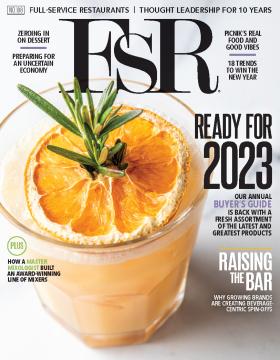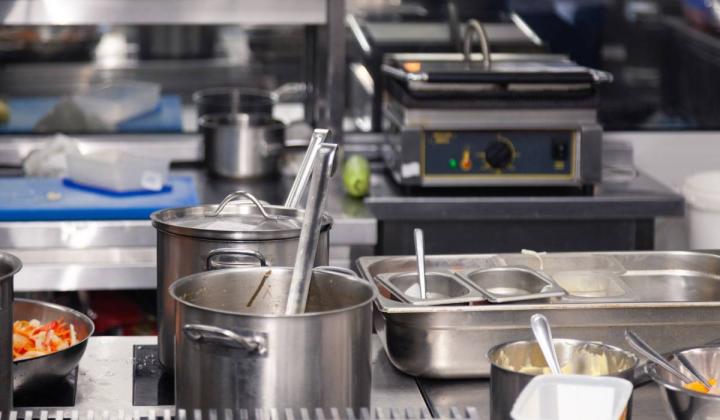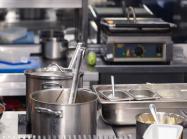Risk management is the key to preventing an epidemic of a foodborne illness.
Foodborne illnesses are the worst situations possible for restaurants. Not only do they impact customer health and lead to negative publicity that dissuades customers, but owners also have to deal with several legal problems.
Such significant risks highlight the importance of giving food safety and outbreak prevention top priority in restaurants, where two-thirds of all foodborne illness outbreaks in the US find their origin. In total, one-sixth of the population of the U.S. becomes sick from foodborne illnesses each year, and 3,000 people die as a result.
Restaurant owners must take several precautions to lower the risks of foodborne disease given how deeply eateries are entwined in such outbreaks. These five steps will be of great assistance:
- Educate and certify employees against foodborne illness outbreaks.
- Inform customers to avoid consuming undercooked or raw food.
- Avoid cross-contamination.
- Recommend regular handwashing.
- Do not simply clean: Sanitize or disinfect.
Risk management is the key to preventing an epidemic of a foodborne illness; lowering the likelihood of contamination at all potential points of contact. Additionally, a documented food safety program may act as a mitigating factor in the number of damages imposed by a lawsuit. In this article, we discuss the common causes of foodborne illnesses, measures to protect restaurants from the aftermath and the significance of insurance coverage.
Common Causes of Foodborne Illness
Food can become contaminated at various times in a food service business while being handled, prepared, and stored. Retailers should be aware of the main factors that contribute to foodborne disease so that staff members can implement food safety measures that will lessen the likelihood of outbreaks at every stage and encourage customer retention. The primary causes of Foodborne illness include:
- Cross-Contamination
Bacteria can remain on surfaces and later transfer to meals made if preparation spaces are not thoroughly cleaned and sterilized. When preparing various dishes on the same cutting surface, it is equally crucial to clean and sterilize the surface between tasks. For instance, to prevent cross-contamination, raw meat, shellfish, and eggs should be processed separately from ready-to-eat foods. Retailers need to remind staff to periodically clean and sanitize surfaces that come in contact with food. If possible, designate specific cutting boards and preparation spaces for particular food items.
- Improper Cooking
Bacteria that cause foodborne infections can frequently be found in foods such as fresh vegetables, dairy products, meat, poultry, fish, and eggs.
Food should be cooked until it reaches the proper internal temperature before being consumed. Customers and staff cannot rely just on sight, smell, or taste to identify whether food has achieved the ideal temperature required to eradicate hazardous bacteria. It is essential to use a food thermometer with accurate calibration.
- Poor Hygiene
Employees who handle and prepare food must practice good hand hygiene since filthy hands might transfer dangerous germs to the food. Additionally, they should be aware of how to keep food safe when coughing or sneezing and, if at all feasible, stay at home if they are ill. Another strategy to lessen the risk of spreading germs from hands to food is to use gloves, utensils, or other tools to avoid direct contact with food. Employees must still wash their hands after using such tools. To guarantee that hygiene is consistent and at the forefront of every employee's mind, proper staff training is essential.
- Not Following Storage Instructions
Food safety and freshness depend on proper storage. Food needs to be stored in containers that keep it safe from infection and increase its shelf life. Whether it needs to be chilled, frozen, or preserved at a high temperature, food should be kept at appropriate temperatures before and after preparation. In addition to improving freshness and lowering sickness outbreaks, effective storage will also reduce food waste and boost profitability.
- Hot or Cold Temperature Abuse
Food safety and quality are ensured by maintaining temperature throughout all phases of food preparation, transportation, and storage. The quality and safety of food can be harmed by extreme temperatures. Utilizing temperature monitoring systems that electronically integrate radio-frequency identification data logging tags with each shipment is one way to guarantee consistent temperature. Organizations may enhance performance, accountability, and transparency along the entire cold chain by recording and storing data in the cloud related to time, temperature, delivery records, carriers, location, and weather.
Organizations are required to store food on-site in accordance with guidelines, such as freezing or refrigerating at specific temperatures. Food that is meant to be served hotter shouldn't be allowed to cool before being served, hence warming trays should be used. Regardless of the temperature, food should not be kept longer than is recommended. Some harmful bacteria can develop even at refrigeration temperatures, albeit slowly. Employees are expected to adhere to all pertinent rules governing food storage durations.
- Measures to Take to Protect Restaurants from the Aftermath
One may ensure the success of their food safety plan in the following ways:
- Establish clear, achievable objectives for the customer's safety as well as the wellbeing and productivity of the business.
- Ensure that the plan has consistent support from senior management and the rest of the organization.
- Establish clear roles and duties and address potential product recall situations in a formal crisis management and communication plan.
- Inform staff members on what to do in an emergency circumstance.
Financial Impact: Insurance Coverage
If a restaurant is a part of a chain or group, it can be challenging to control every aspect of food handling across all locations. Nevertheless, a protocol with best practices for risk management should be established to ensure that each manager or owner is adhering to appropriate instructions to handle food properly. One of the biggest financial hazards the food business faces is claims for food-borne illnesses.
One must look at options that would protect them from these types of losses. Loss of income, incident response costs, and public relations costs are among the key financial impacts of a food-borne illness epidemic that are covered by food-borne illness insurance.
Some of nature's most constant sources of germs are people and food. Additionally, they are also the most prolific transmission systems. The act of having dozens of employees prepare, cook, and serve meals to hundreds of clients adds several factors that might compromise any safety protocol.
Several people could become ill from one mistake made during lunch rush, endangering the company's viability. If there is only a minor outbreak and things return to normal within a few days, the restaurant’s reputation may be saved. However, some illnesses harm humans in much more severe ways. If that occurs, restaurant liability insurance can be the best solution in an expensive legal dispute.
Damon Shrauner, Senior Sales Consultant and VP on B2B Sales at ChefBuyer, working in the foodservice equipment sector since 1994. With his expertise in market analysis, product placement, sales, and project management, he will always tell you what to do for the best of your business.




%20(1)_099fe.png)











